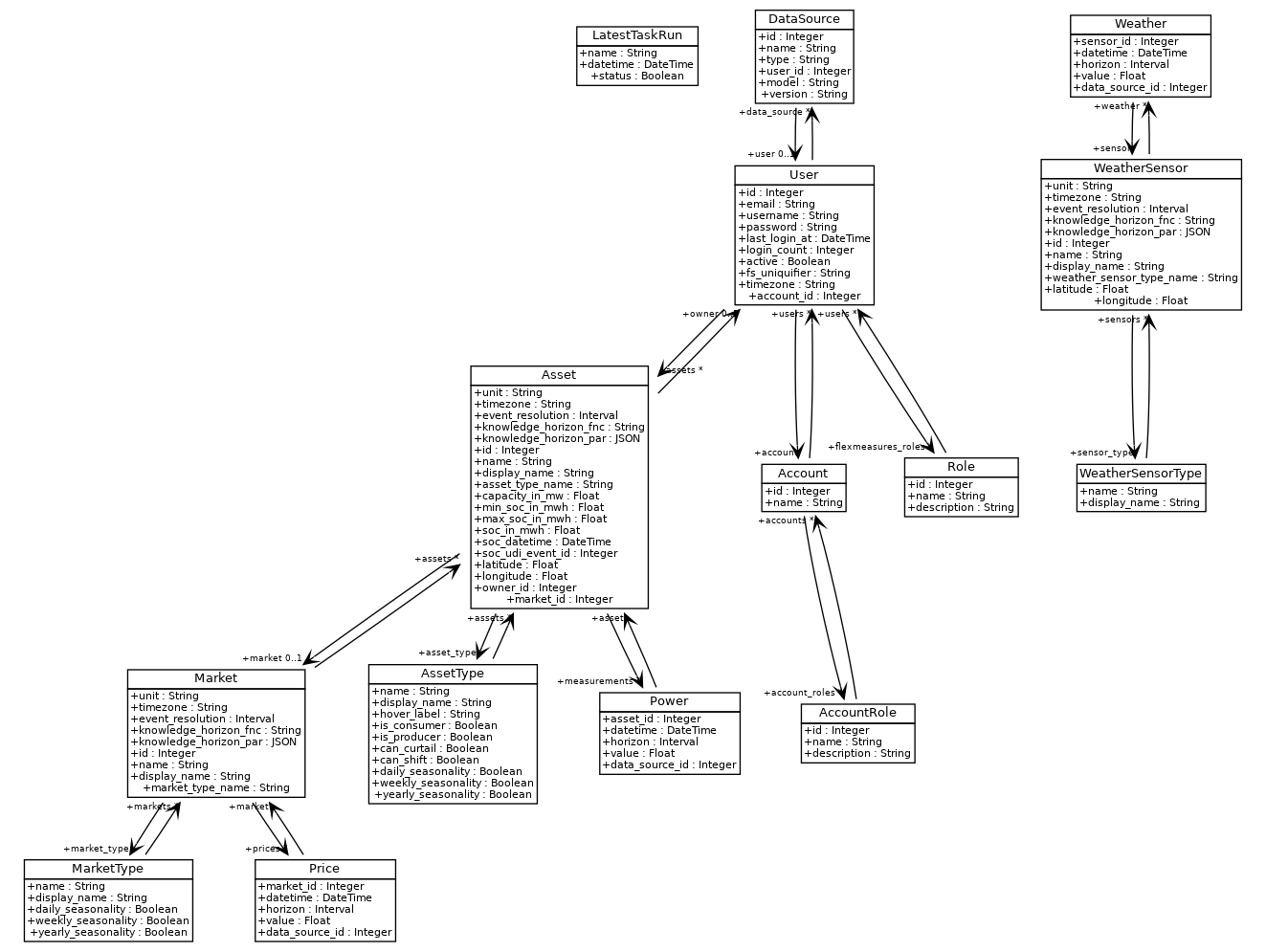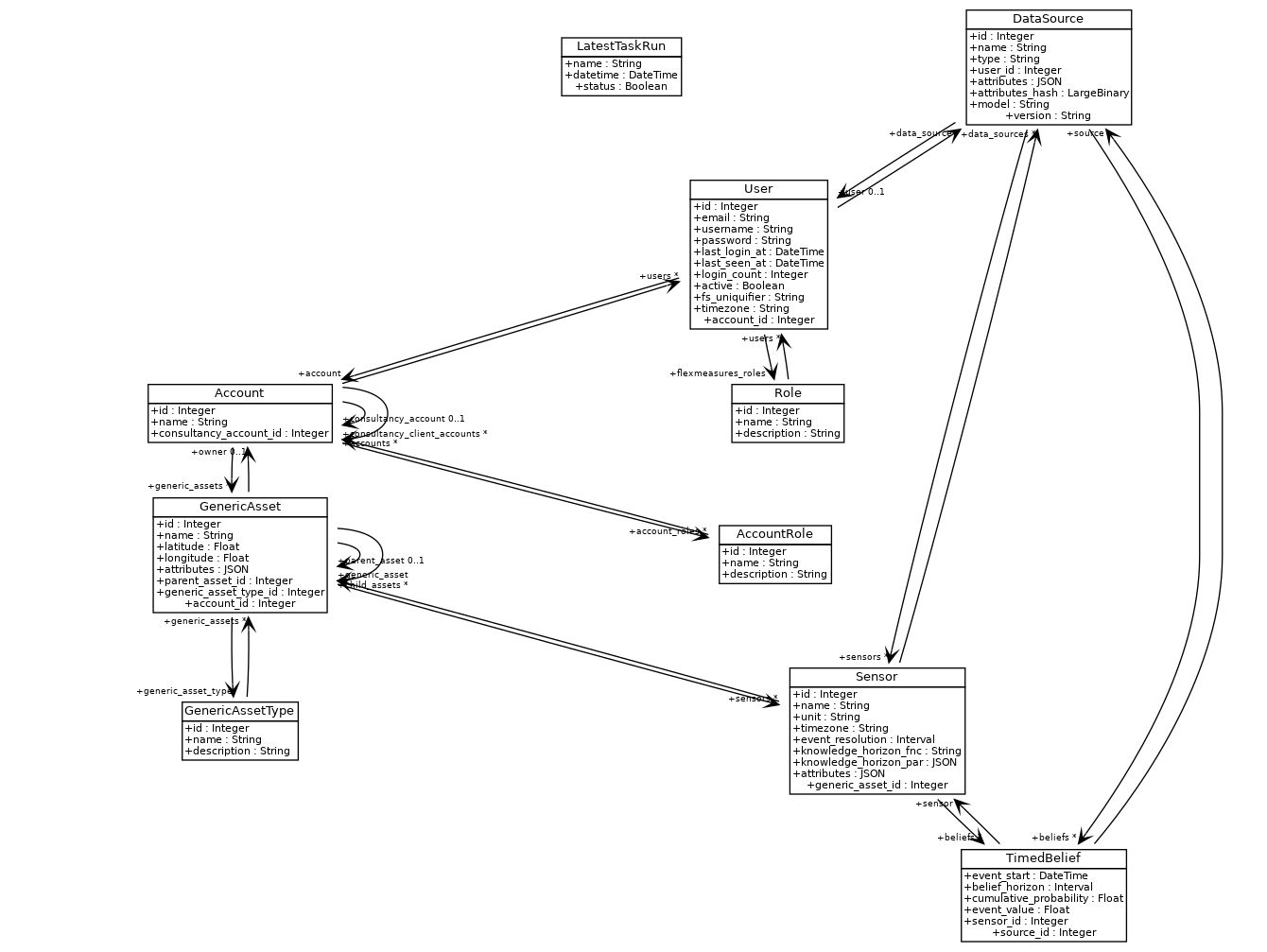FlexMeasures is already ~3 years in the making. It's a normal process for well-maintained software to update architectural principles during such a time.
We are in the middle of a refactoring which affects the data model, and if you are using FlexMeasures on your own server, we want you to know the following:
If you work with the current model, there will be support to transition data to the new model once it's active. Actually, we are already working with the new model in some projects, so talk to us if you're interested.
We do this transition so we can make FlexMeasures even more useful. For instance: support for more kinds of assets (energy plus related sensors). Or better forecasting and scheduling support.
There are two important transitions happening in this transition:
- First, we'll be deprecating the specific data types
Asset,MarketandWeatherSensor. We learned that to manage energy flexibility, you need all sort of sensors, and thus a more generalisable data model. When we model assets and sensors, we'll also better be able to differentiate the business from the data world. - Second, we'll fully integrate the timely-beliefs framework as the model for our time series data, which brings some major benefits for programmers as it lets us handle uncertain, multi-source time series data in a special Pandas data frame.
For the curious, here are visualisations of where we're now and where we're going (click image for large versions).
The current model:
The new model (work in progress):
We made a technical roadmap on Github Projects.
Here is a brief list:
- Data model based on timely beliefs: Our data model of beliefs about timed events, timely-beliefs, is being more tightly integrated into FlexMeasures. We do this so we can take advantage of timely-belief's capabilities more and increase the focus of FlexMeasures on features.
- Scheduling of sensors: We are extending our database structure for Sensors with actuator functionality, and are moving to a model store where scheduling models can be registered. We do this so we can provide better plugin support for scheduling a diverse set of devices.
- Forecasting of sensors: We are revising our forecasting tooling to support fixed-viewpoint forecasts. We do this so we can better support decision moments with the most recent expectations about relevant sensors.
- Sensor relations and GeneralizedAssets with metadata: We are generalizing our database structure for organising energy data, to support all sorts of sensors and relationships between them. We do this so we can better support the diverse set of use cases for energy flexibility.
- UI views for GeneralizedAssets: We are updating our UI views (dashboard maps and analytics charts) according to our new database structure for organising energy data. We do this so users can customize what they want to see.
- Deprecate old database models: We are deprecating the Power, Price and Weather tables in favour of the TimedBelief table, and deprecating the Asset, Market and WeatherSensor tables in favour of the Sensor and GeneralizedAsset tables. We are doing this so users can move their data to the new database model.

